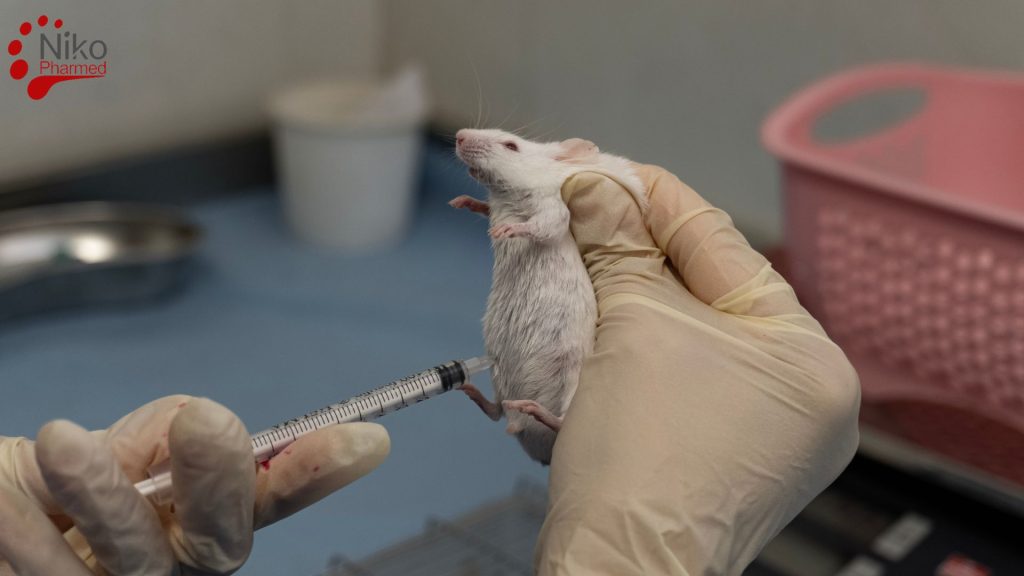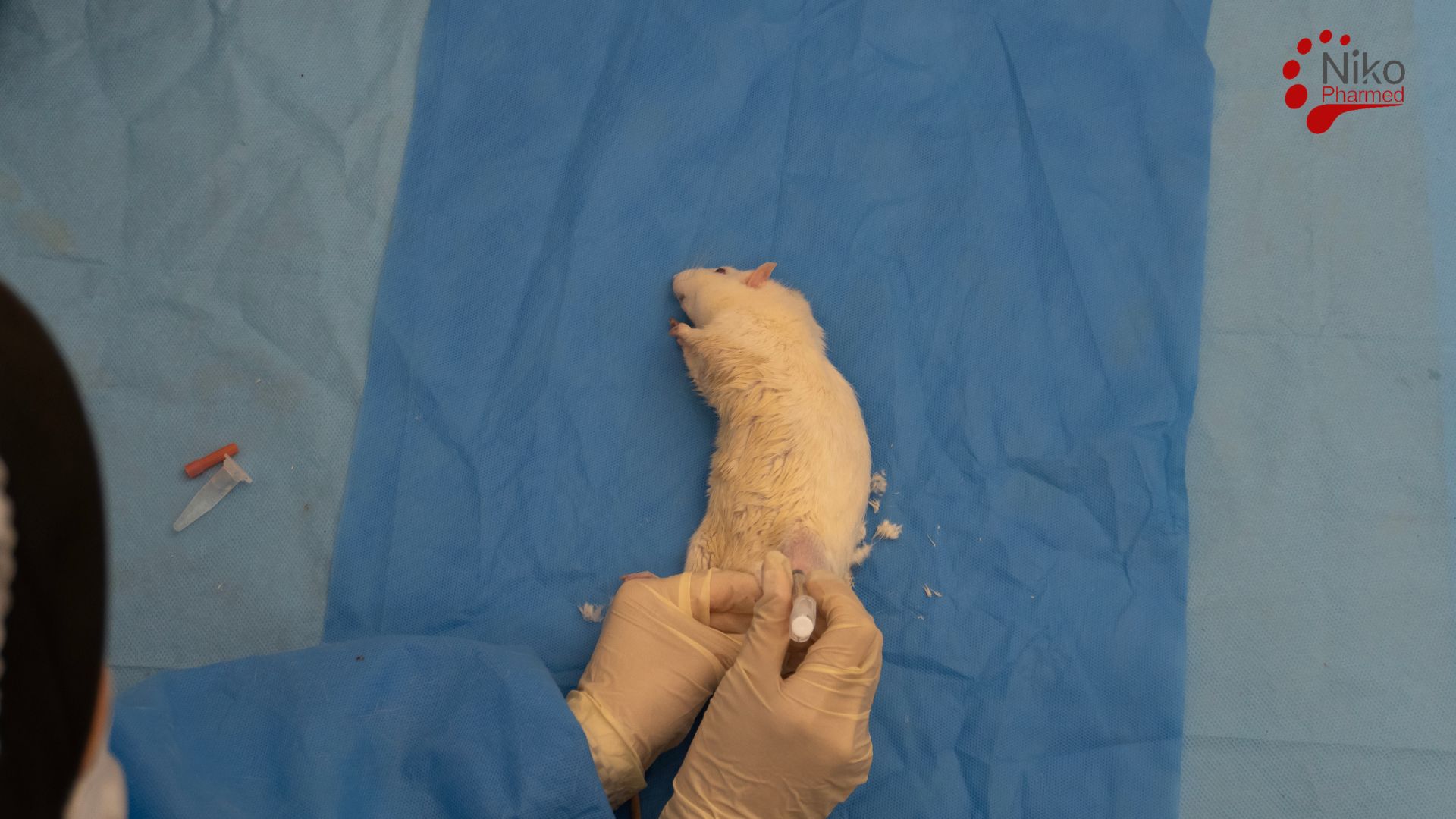What is Subchronic Systemic Toxicity?
Subchronic systemic toxicity refers to the potential harmful effects on the body’s organs and systems from repeated exposure to substances released by a medical device over a period of up to 90 days. These studies aim to detect cumulative toxicity, target organ effects, and the reversibility of any changes.
Using relevant animal models, test substances are administered through clinically appropriate routes, and parameters such as body weight, blood tests, organ weights, and tissue examinations are evaluated. This testing is essential for devices with prolonged or long-term body contact, to ensure patient safety. Within the ISO 10993-11 systemic toxicity framework, subchronic studies bridge shorter-duration Subacute Systemic Toxicity evaluations and longer-term Chronic Systemic Toxicity investigations, providing critical information on cumulative effects over a 90-day period.
Subchronic Toxicity Test Procedure
The purpose of the subchronic toxicity study is to determine whether repeated exposure to a medical device or its leachables over a period of up to 90 days produces adverse systemic effects. This aligns with ISO 10993-11, which requires safety assessment of devices with prolonged or long-term body contact. Together with Acute Systemic Toxicity Testing and the broader Systemic Toxicity Testing strategy, subchronic studies help build a coherent picture of dose–response relationships, target organs and safe exposure levels for devices with repeated or long-term use.
Test Preparation
The finished device (or representative materials) is prepared for testing.
If extracts are used, they are generated under conditions defined in ISO 10993-12, typically with both polar and non-polar solvents, at controlled temperature, time, and surface-area-to-volume ratios.
Extracts are compared against vehicle (blank) controls.
Selection of Test System
Healthy rodents (commonly rats) are generally used, with both sexes represented.
Animals are randomized into groups (control and at least three dose levels).
Group sizes must be large enough for statistical validity (usually 10 animals/sex/group).
Route and Duration of Exposure
Administration route is chosen to reflect clinical exposure (oral, intravenous, subcutaneous, inhalation, or dermal).
Dosing is repeated daily or via continuous exposure for 90 days (subchronic duration).
Control groups receive only vehicle (blank extract).
Observations During Study
Mortality/morbidity checks are performed at least daily.
Clinical signs (behavior, appearance, activity) are recorded.
Body weight and food consumption are measured weekly.
Interim and terminal clinical pathology assessments include:
- Hematology
- Clinical chemistry (e.g., liver/kidney function markers)
- Urinalysis
Terminal Procedures
After 90 days, all animals are euthanized humanely.
Gross necropsy is performed, with detailed organ examination.
Organ weights (e.g., liver, kidney, spleen, heart, brain, gonads) are recorded.
Histopathology is carried out on a comprehensive set of tissues to detect microscopic changes.
Where applicable, recovery groups (kept alive after exposure stops) are examined to assess reversibility or persistence of toxic effects.
Data Evaluation
All results are analyzed statistically to detect treatment-related changes.
Special attention is given to dose–response relationships, target organ identification, and reversibility.
A NOAEL (No-Observed-Adverse-Effect Level) or LOAEL (Lowest-Observed-Adverse-Effect Level) is determined.
Findings feed into the overall biological risk assessment for the device, supporting its safety evaluation(These NOAEL and LOAEL values are then integrated into the overall ISO 10993 biocompatibility testing programme for the device, forming a key part of the toxicological risk assessment supporting regulatory submissions).
To request testing or a complimentary consultation contact Nikopharmad
Nikopharmed Subchronic Systemic Toxicity Testing Laboratory
Global Recognition
ISO/IEC 17025-certified and ILAC-accredited, Nikopharmed ensures full compliance with ISO 10993-11 standards, providing data that is globally accepted by regulatory agencies for subchronic toxicity testing.
Technical Excellence
Our GLP-compliant studies are designed specifically for subchronic exposures (up to 90 days), using validated models to assess systemic safety. We perform comprehensive evaluations, including hematology, clinical chemistry, organ weights, and complete histopathology, to detect cumulative and target organ effects.
Regulatory-Ready Reports
We deliver comprehensive, traceable, and scientifically robust reports that establish NOAEL values and support FDA, EMA, and international submissions for device approvals requiring subchronic systemic toxicity data.
Confidential & Secure
Using 21 CFR Part 11-compliant electronic systems, we safeguard sensitive pre-market data, ensuring full data integrity, security, and regulatory traceability throughout the study lifecycle.
Cost-Effective Solutions
Our tailored subchronic study designs offer flexibility and competitive pricing to meet the needs of medical device manufacturers, enterprises, and regulatory bodies—without compromising scientific rigor.
To request testing or a complimentary consultation contact Nikopharmad
Your Trusted Partner in Subchronic Systemic Toxicity Testing
By choosing Nikopharmed, clients gain access to a globally accredited partner committed to scientific precision, regulatory compliance, and strict data confidentiality. Whether evaluating medical device leachables, degradation products, or prolonged exposure risks under ISO 10993-11, our expertise guarantees defensible and internationally recognized results—helping you accelerate regulatory approvals with confidence.
Conclusion
The subchronic toxicity test under ISO 10993-11 is a 90-day repeated-dose study using appropriate animal models, designed to evaluate systemic effects from device leachables.
It involves controlled preparation of test articles, repeated dosing, clinical observations, laboratory analyses, necropsy, and histopathology. The outcome is used to determine safe exposure levels and support medical device biocompatibility assessment.


